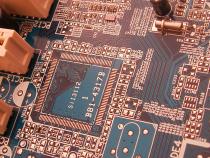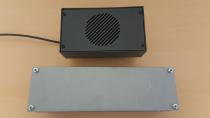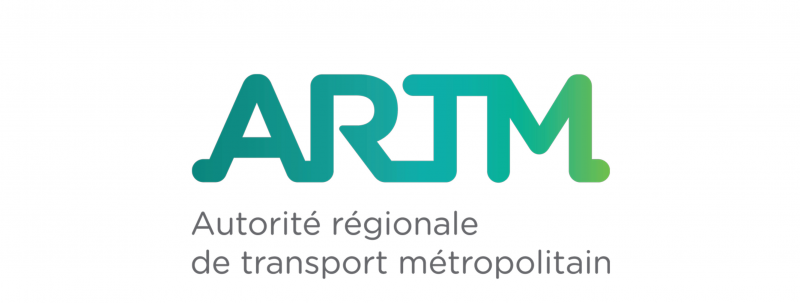Technology Companies or OEMs who will win the battle for your data FINAL

A couple of weeks ago I was having a conversation with a senior executive at a major OEM when I admitted to owning a vehicle from that company. This prompted a question on what I did and didn't like about the ownership experience to date. I replied that not having a central online system of my vehicle's maintenance records was quite annoying, especially as my vehicle had work done at 4 different dealers in its young lifetime. It meant that I had to pro-actively keep track of my car's servicing needs and to keep all the paperwork to prove it had a service history for a future buyer. As much as I liked the brand, the design and performance of the car, these experiences would likely make me switch brands.
The executive seemed to downplay the importance of such experiences as secondary to the vehicle itself. I was at first surprised by this response because the issue bugged me and was a definite negative of owning the vehicle. However, I soon realised that it encapsulates the current thinking of many OEMs who have yet to realize the importance of the overall car ownership experience beyond the traditional value propositions around driving experience, safety and design. Making smart use of data to create brand experiences is not in the DNA of most OEMs, and even for those who have realized the importance of data, a lack of IT talent, legacy vehicle architectures, ageing systems and conflicts of interest with the dealer network inhibit progress.
Traditionally, car owners didn’t expect much from their dealers with regards to data and service. You bought or leased the car, brought it in for service and otherwise had little reason to visit a dealership before it was time to change over for a newer model. However, the consumer of tomorrow will not only expect great quality, brand image and outstanding service, they will also expect a high level of convenience.
Tesla has shown what is possible with modern hardware and an end-to-end architecture built for OTA and has completely changed the paradigm of how the industry engages with consumers across the lifecycle. Vehicles not only diagnose issues and deliver fixes over the air, but also generate incremental revenues through new features throughout the lifecycle. Established players, have a hard time to respond in view of their legacy architectures and long R&D cycles. For most OEMs it will take many years before they have a vehicle in the market that can match the comprehensive OTA capabilities of today’s Tesla.
OEMs and Tier 1’s though haven't really struggled with product digitization. Today's’ vehicles are full of advanced sensor technologies that help increase safety and comfort or reduce environmental impact. Most OEMs today have the ability to perform detailed analysis based on system component data - they can tell not only where you drove and how fast, but likely if you or your household partner were doing most of the driving. However, most of the work of OEMs has been focused on improving the inner functions of the car. What traditional OEMs struggle with is connectivity and Tesla has shown what is possible with OTA compared to the half day at the dealership for traditional vehicles.
But it does not end with OTA. Tesla recently announced that their vehicles had mapped nearly 780 million miles of data from customer's cars, 100 million of that on their Autopilot system. In the world of New Mobility, cars will transform from being a method of transport to platforms that not only collect massive amounts of data, but provide a distribution channel for new kinds of services. Silicon Valley players such as Google and Apple think of cars as the ultimate mobile device, and as Level 4 and 5 autonomous driving become a reality, the value proposition of the car will fundamentally change. The challenge for automotive OEMs will not be to build autonomous cars, but to transform their business models to embrace new ownership models and data driven services.
This business model innovation will likely challenge established automotive players far more than the engineering challenges around driverless cars. However, the biggest problem that OEMs may need to deal with is business model disruption, and an example from the Technology sector is worth considering. Microsoft, once the most powerful company on the planet with two quasi monopolies (Windows and Microsoft Office Productivity Tools) successfully fended off many competitors who tried to beat the company at its own game. But it was unable to effectively compete with Google’s disruptive online search advertising business model.
While Microsoft was financially capable of building a range of large data centers at a cost of USD 500 million each, it racked up huge losses of up to USD 2.5 billion per year. Why? It lacked the internet services to turn the computational power and data sitting in these data centers into services that consumers would want to use – for free. For a company that was used to selling software licenses delivered on a CD, it took nothing short of a revolution to make the transition towards subscription services and ad-funded business models. Almost ten years later, Microsoft is still in the midst of this transformation, and has long lost its former supremacy in the world of computing to Google and Apple.
How is this relevant for automotive? We have little doubt that OEMs who combine the ability to invest with excellent R&D skills, can master the technical challenges of autonomous driving, electric drivetrains and OTA. However, it remains to be seen if and how the incumbents will be able to transform their businesses to embrace a digital business models. In competing with emerging players OEMs will face competition from Tech Companies that are resourceful, have a competitive advantage in software development (both in scale and expertise) and a corporate DNA that is rooted in internet services, rather than mechanical engineering.
Therefore it is Technology companies that are currently better positioned to take control of data and succeed in the world of New Mobility. However, OEMs still have an opportunity to retain their strong incumbent status by taking 3 steps in purposeful and proactive manner:
1. Carefully balance acceptable Cyber Security and Privacy risks with Innovation, high level Customer Experience and new Business Opportunities.
2. Strategically invest in digital business now. Start with a focus on consumer experience innovations in today's environment, which can be expanded as new market opportunities move from ideas to technical feasibility and increasing financial viability.
3. Shift to an ecosystem centric view of the consumer. The New Mobility world will seamlessly connect a range of technologies together, and as such, adopting a cross industry approach that embrace start ups as part of Open Innovation programs will allow manufacturers to expand their reach from Automotive to fully fledged mobility. As part of this, a view point shift from physical products into digital platforms and related ecosystem must start today.
Jointly authored by James Carter (Vision Mobility) and Alex Renz (New Mobility Consulting)
About the authors: James Carter is a 20 year Automotive Industry veteran with multi decade OEM experience and now serves as Principal Consultant at Vision Mobility, a consultancy focused on Sales and Marketing in New Mobility. Alex Renz is a Partner in New Mobility Consulting brings more than 15 years of experience in IoT, autonomous systems, cloud computing and software platform ecosystems to the future of smart mobility and transportation.
Together, their joint experience in OEM Automotive and Technology industries allows them unprecedented insight into the world of New Mobility, and have provided services for Fortune 500 companies, Startups and businesses looking to pivot towards the opportunities that lay ahead in New Mobility.






















